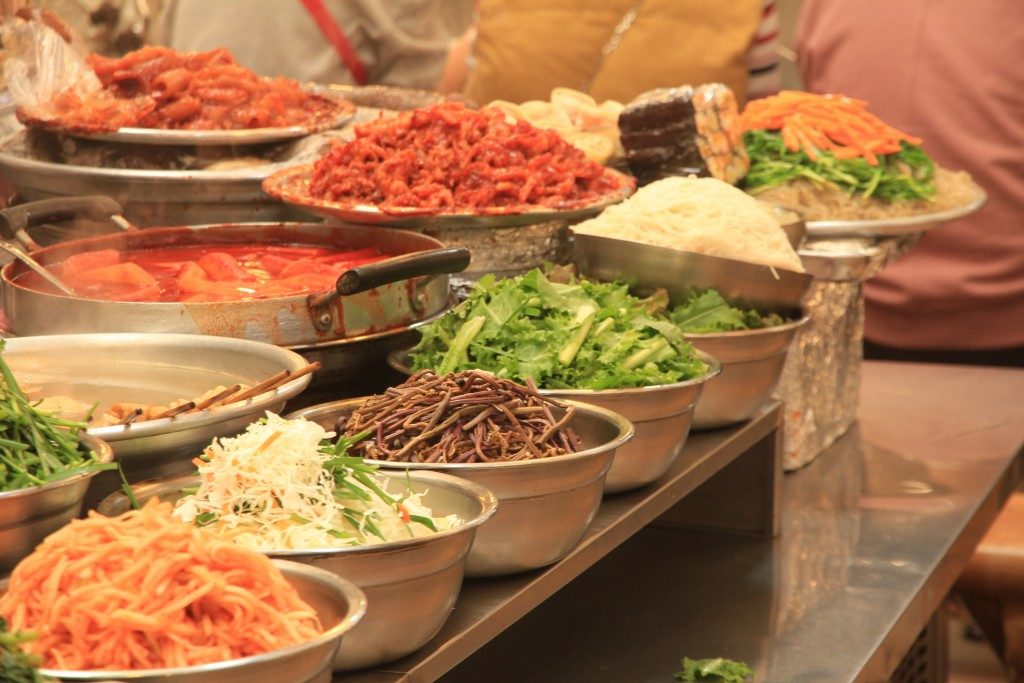The flavours of Korea are overtaking the taste buds of everyone from East to West. Fusion cuisine combines the flavours of Korea with the familiar dishes of the West, creating a flavour combination that has captivated the taste buds of diners across the globe.
Once catering solely to the Korean immigrant communities across the cosmopolitan cities of the world, Korean and Korean fusion cuisine is taking the world by storm, riding the wave of popularity that came in the wake of the world’s growing fondness for Korean pop culture. Customers as far apart as Singapore and the United States have developed a taste for the flavours of Korean cuisine.
A Worldwide Wave
In the West, Korean-inspired flavours had their start in the kitchens of the Korean diaspora, where the descendants of Korean immigrant families began to cater to more and more people from outside their communities. Elsewhere, the appreciation of Korean cuisine began with the growing prevalence of Korean Wave pop culture.
Korean things are in vogue and aren’t likely to go out of style any time soon. This newfound appreciation for Korean pop culture has invited gourmands and casual diners alike to explore what Korean cuisine has come to offer. Today, Korean and Korean-inspired dishes continue to tantalise the taste buds of people from different walks of life. Korean condiments and sides are becoming a sought-after delicacy, and Korean barbecue sauce is now one of the world’s most popular condiments.
A Casual Approach

When people think of Korean cuisine, they often refer to the traditional sit-down dishes or barbecues, which while delicious, isn’t usually something people can enjoy on the go. It wasn’t surprising, then, that Korean fusion cuisine—where Korean flavours and techniques give a unique spin on traditionally Western dishes—would emerge.
Korean fusion cuisine often manifests in the form of Korean-inspired fast casual dining and fast food. Fast food fare had been given a Korean-inspired twist, imparting the classic sweet, sour, and savoury notes of Korean cuisine to more casual fare from a multitude of cultural backgrounds.
Today, an assortment of fast casual dishes, such as Korean fried chicken, is on the menu for the Korean culture aficionado. Korean fusion dishes can often tantalise the palate in odd and unusual ways based on combinations of typical Korean condiments and ingredients to Western ones. The interplay of these flavours often wins over many fans of both Western and Korean dishes.
Things to Expect
The richness of savoury and sweet flavour combinations is common in most Korean fusion dishes, complementary tastes that have beguiled many diners. The soy garlic sauces that coat Korean fried chicken is another, a familiar sweet, savoury glaze that has taken the world by storm, as has the marinade behind another famed traditional Korean dish, bulgogi.
Many of Korean cuisine’s most common ingredients and sides are used extensively in Korean fusion dishes, often playing with Western and other dishes in interesting ways. Sauces and condiments are the most common things added to the mix. Kimchi—a recognisable dish based on spiced, fermented cabbage—is a common addition to fusion dishes, as is gochujang, a fermented chilli sauce with a flavour profile that is at once smoky, spicy, tangy, and sweet. Both dishes are remarkably spicy, and the daredevil diner can often test the endurance of their taste buds by trying out fusion dishes that add on Korean-inspired spice blends.

